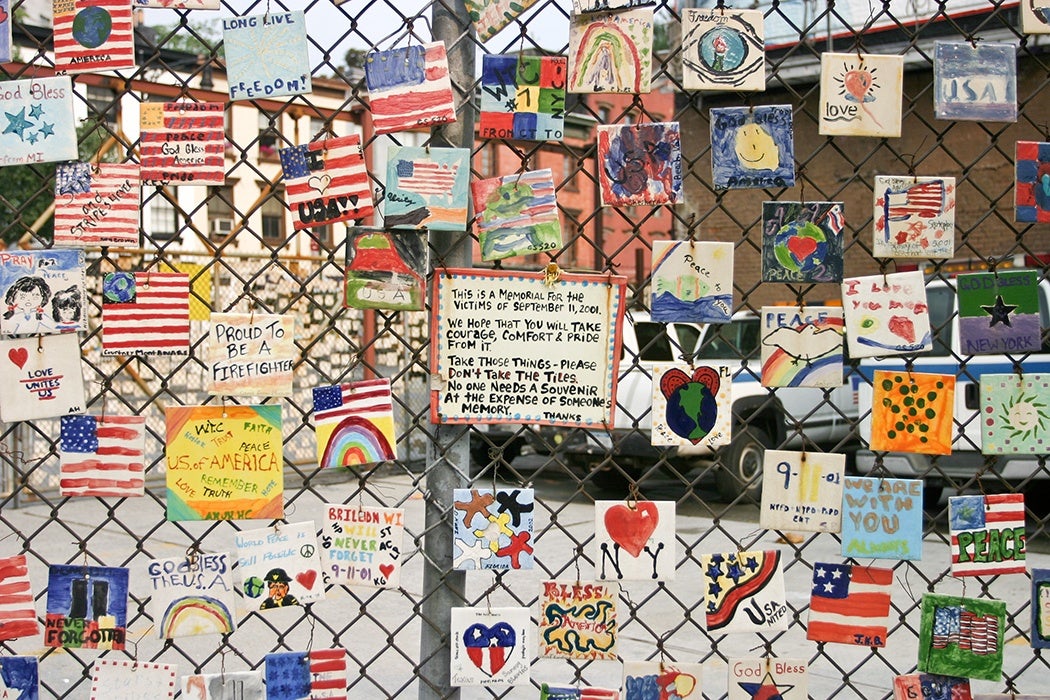Fifteen years on, the official memorial and museum have been completed, and even the destroyed transit hub/shopping center has been replaced. But people who were there on September 11, 2001 remember how at first New Yorkers, despite their reputation for sophisticated modern views, responded to the attacks in an impulsively traditional, some might say spiritual, manner. They constructed shrines.
Throughout the city, streets were crowded with thousands of impromptu shrines, adorned with photographs, stuffed animals, flowers, and posters pleading for information in the hope that somehow the missing might simply be lost. Some shrines were overtly religious: candles decorated with Catholic saints, Jewish ritual artifacts, Christian crosses, depictions of Hindu deities. Others were devoid of external religious symbolism. Firehouses and police stations were inundated with tributes to the city’s protectors who died. People openly sobbed in front of pictures of strangers.
Folklorists and others have noted the significance of these shrines. They were a means of tradition, saving mourners from the complete loss of pre-9/11 moments via the placement of a photograph of a graduation or an office party. They were a way of expressing sheer grief in the immediate aftermath before the more somber mourning which arose later.
Folklorists Kay Turner and James Merrill examine why these kinds of shrines tend to share common elements. The stuffed animal becomes a way mourners can insert themselves into the scene. Candles, both religious and secular in nature, as well as U.S. and other national flags, were another. Visions of the destroyed Twin Towers became a familiar sign, a testament to a kind of missing limb felt by the city as a whole, as an architectural icon vanished from the skyline.
Weekly Newsletter
While the shrines gradually evaporated, scattered by the winds and the rain, folklorist Jack Santino argues that the ephemeral nature of these shrines was, in retrospect, part of what made them important. While the media may prefer the phrase “makeshift memorial,” Santino argues these structures are actually “spontaneous shrines” which remain as silent witnesses to public deaths. One goal of war is to depersonalize death, especially of enemy combatants. Shrines do the opposite. They are a reminder not to write off victims as mere regretable statistics. Shrines’ placements in the midst of busy urban life become public statements.
Turner and Merrill note that spontaneous shrines are a kind of collective howl of the grieving. If anything, they are, whether religious or secular, “the solid if fragmenting proof that a single life was lived.”







